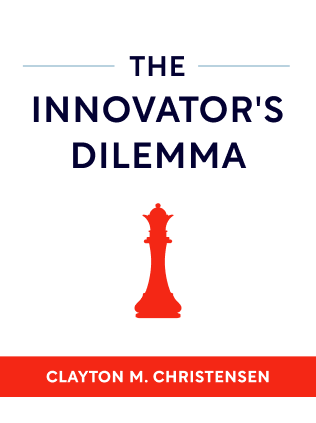

This article is an excerpt from the Shortform summary of "The Innovator's Dilemma" by Clayton M. Christensen. Shortform has the world's best summaries of books you should be reading.
Like this article? Sign up for a free trial here .
What is a disruptive innovation model for change? What should a company consider in evaluating any disruptive innovation model?
A disruptive innovation model can identify options for change. When facing a disruptive innovation, there are options for changes to adapt.
Read more to understand the disruptive innovation model and how it can help identify strategies for handling these changes.
Disruptive Innovation Model: Capabilities Needed
When a company considers adopting a disruptive innovation model, managers must assess whether the company has the capabilities to do so. If it doesn’t, they have three options:
- Try to make changes within the company to create the necessary capabilities
- Buy a smaller company to take on the project
- Spin off a separate organization that has autonomy from the main company to establish its own processes and values
Let’s look at the pros and cons of each option in more detail.
Option #1: Create Capabilities
A company’s leaders might be tempted to try altering the company’s assets to create new capabilities, but this method is extremely difficult.
It’s relatively simple to resolve resource disabilities, but companies’ disabilities are often in their processes and values, and those are much more difficult to change.
Two factors make processes particularly difficult to change:
- A company’s structures are often built around enabling its own processes and impeding other processes. Communication flows, management structures, workflows, and other organizational pillars can make implementing a new process unfeasible.
- Company leaders and employees may be reluctant to replace processes that have consistently worked to make the company successful.
Given the difficulty of changing processes, companies may attempt one of two alternatives:
- Forcing existing processes to support the disruptive innovation. However, one set of processes simply can’t fit two different types of business models (the established and the disruptive).
- Creating a second set of processes to support its disruptive business. This approach can only work if a team is assigned specifically to that project and those processes, and the team remains separate from the company’s other processes.
Option #2: Acquire a Company That Can Implement a Disruptive Innovation Model
Instead of fighting against a company’s existing culture in order to make the significant changes necessary, it’s easier and more effective to acquire an existing company that already has the capabilities to adopt the disruptive technology.
When a company acquires another firm, managers must be clear about which capabilities the acquired firm offers. Identifying whether the acquired company brings necessary resources, processes, or values helps determine how to structure the new organization.
For example, if the acquired company has valuable processes and values that the parent company needs for the disruptive project, the acquired company shouldn’t be integrated into the parent company. If the acquired company is integrated, its processes and values will simply dissolve into the parent company’s existing processes. Instead, the parent company should let the acquired company operate independently, and the parent company should merely contribute additional resources to the acquired company.
On the other hand, if a company chooses to acquire another firm because of that firm’s resources—such as money, people, or relationships with suppliers—the parent company should integrate the acquired firm. In this case, the parent company’s processes and values are better suited for the project, so the acquired company simply boosts the parent company with its resources.
Option #3: Spin-Out Organization
Instead of acquiring another firm, a company can spin out an independent entity from its own organization, which is where the disruptive innovation model would be put in place. As we talked about in Chapter 5, this entity must have the separation and autonomy to develop its own processes and values.
The parent company can simply support the spin-out organization with resources, as long as the spin-out doesn’t have to compete for those resources against the parent company’s existing projects. If the disruptive organization is forced to compete, it will always lose to the higher-profit products.
For a spin-out organization to be successful, it needs the full support and attention of the parent company’s chief executive. The CEO can ensure that the entity is allowed the independence it needs to create its own processes and values, and that the entity is getting adequate resources to succeed.

———End of Preview———
Like what you just read? Read the rest of the world's best summary of Clayton M. Christensen's "The Innovator's Dilemma" at Shortform .
Here's what you'll find in our full The Innovator's Dilemma summary :
- Christensen's famous theory of disruptive innovation
- Why incumbent companies often ignore the disruptive threat, then move too slowly once the threat becomes obvious
- How you can disrupt entire industries yourself






